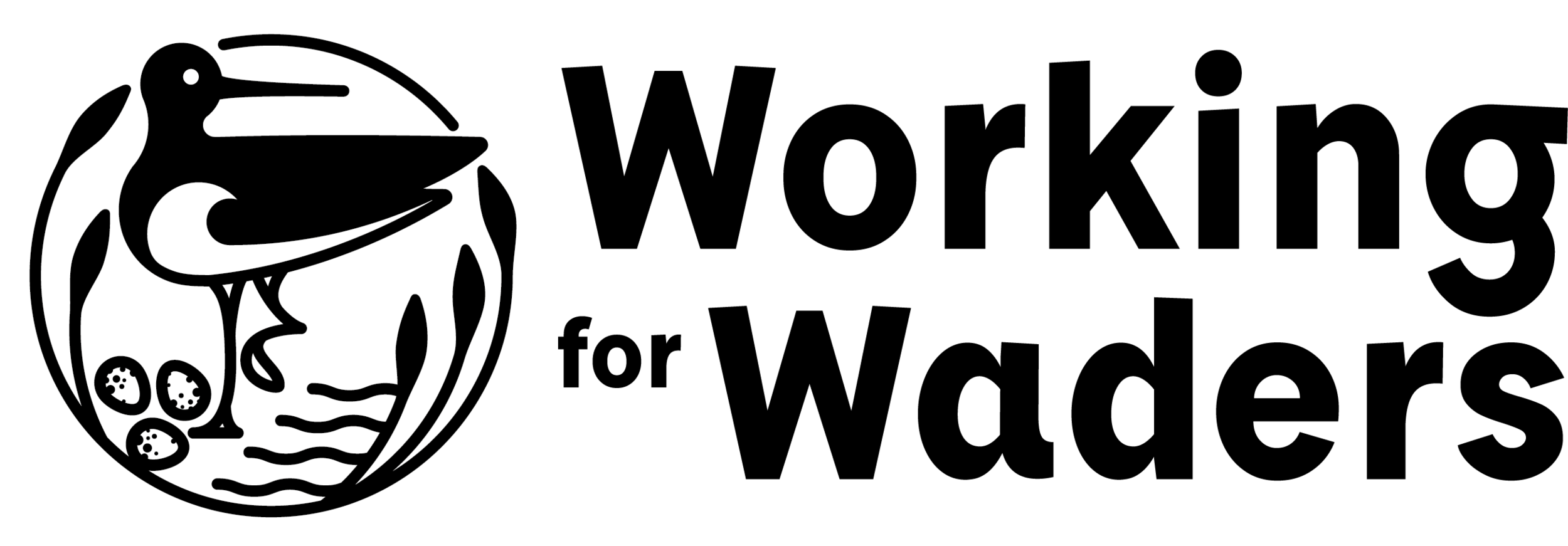Wader Whisperer 2025 - by Dave Parish
“Hard to spot but the brood of four lapwing chicks can be seen huddled at the water’s edge in the centre of the shot, just before they were rescued.”
Earlier this month I was able to escape the office for what is becoming my annual trip to the Angus Glens, to spend some time with Bruce Cooper, facilitator for the West Angus Wader Community project. It was one of the first cooler days in Angus after the hot, dry weather we’d experienced for weeks previously, and the ground was dry and dusty, but the sun was shining.
We began by trying to confirm whether the ‘gym’ oystercatchers were nesting again on one of the shingle patches in the local business park. Bruce often receives updates from gym goers and others working in the area, but no-one knew if the birds had settled this year and, alas, we couldn’t find a nest. This is not unusual for oystercatchers. These long-lived birds often return to their breeding grounds only to hang around and not actually breed. And it isn’t always clear why: is something different that they don’t like, or perhaps they’re not quite in peak condition and decide to rest and wait for next year? Who knows!
We moved on to start checking for breeding activity on the more rural areas of the project area and quickly noticed a female lapwing flitting back and forth across an overgrown ditch alongside the road in front of us. We were struck by a feeling of déjà vu, as last year when I visited Bruce, we witnessed similar behaviour and found a chick stuck in the bottom of a wet ditch, with the female frantically calling, trying to encourage it to climb out – an impossible ask. We watched for a few minutes and with no change in the situation, went to investigate, only to find a full brood of four chicks no more than a couple of days old sitting in the edge of the water. With mum scolding us from above, we lifted them all and quickly released them in the rough grass on the other side of the road. There should have been more food and shelter there than in the tattie field on the other side of the road. Here’s hoping.
A bit further down the road we stopped to confirm reports from one of Bruce’s colleagues who carries out predator control on the site, of several lapwing hanging out in some rough, ploughed ground at the edge of a tattie and cereal field. They were quite some way off but after a short while, not only could we confirm the presence of several adult lapwings but we also saw a few chicks. This was something of a relief because with all the dry weather there were concerns about how the youngsters would fare, so seeing yet more chicks was welcome news. We were also treated to a couple of redshank which flew in and sat preening on some wonky fenceposts – the first recent record for this species in the area, Bruce tells me. Unfortunately, we heard the following week that these ploughed areas had been sown with some kind of ‘conservation mix’. Hopefully the chicks will have moved out before the contractors moved in.
Finally, we ended the day with a survey across one of the larger hill farms in the area, trying to confirm suggestions of nesting curlew, lapwing and oystercatcher. By this time, it was mid-afternoon and the sun was high with a stiff breeze blowing, and there wasn’t much activity around, so, despite some pretty good looking habitat, we were unable to tell whether there were birds present in all the locations we checked, or whether they were just hunkered down. We were able to confirm some breeding activity, but we were entertained throughout by two pairs of osprey nesting nearby, which was pretty spectacular.
I am always amazed by what Bruce and his colleagues have achieved. They cover a huge area and liaise with dozens of land managers and other stakeholders, persuading most of them to do their bit for the local waders. This has only been possible because the work has been funded, to varying degrees, over the last few years, but funds are running dry. We will continue to do our best to support Bruce’s endeavours but if anyone has any cleaver ideas about how to raise funds, please get in touch. This is a model that we would like to replicate across the country to try to halt the decline in waders – if only we could clone Bruce…
WAWC wader whisperer – “Each nest is like gold dust – for so many reasons. Here, Bruce is logging a lapwing nest in the database so we can easily keep track of what happens and learn from the combined stories each nest tells over the years.”


